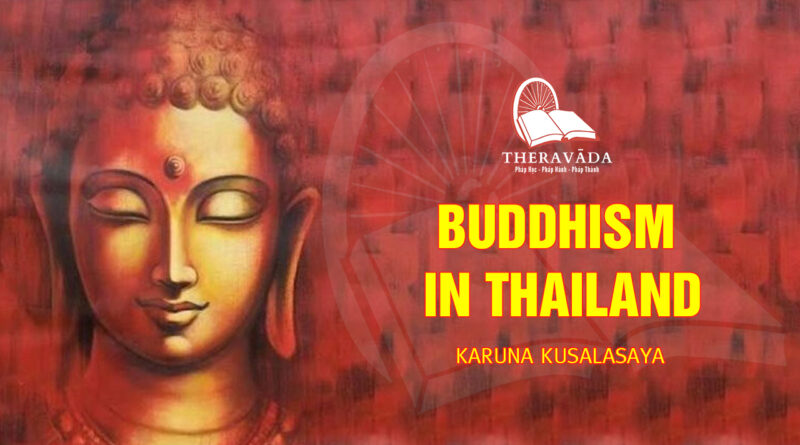Buddhism in Thailand
Karuna Kusalasaya
EOPLE all over the world who are interested in Buddhism and keep in touch with its news and activities must have heard of the Buddha Jayanti celebrations held a few years ago in all Buddhist countries, including India and Japan. It was in 1957 or, according to the reckoning of some Buddhist countries, in 1956, that Buddhism, as founded
by Gotama the Buddha, had completed its 2,500th year of existence. The Buddhist tradition, especially of the Theraváda or Southern School such as now prevails in Burma, Ceylon, Cambodia, Laos and Thailand, has it that
on the completion of 2,500 years from its foundation, Buddhism would undergo a great revival, resulting in its all-round progress, in both the fields of study and practice. Buddhists throughout the world, therefore, commemorated the occasion in 1956-57 by various kinds of activities such as meetings, symposia, exhibitions and the publication of Buddhist texts and literature.
As to whether or not the tradition mentioned above has any truth behind it, the future alone will testify. However, judging from news received from all corners of the globe, it is no exaggeration to say that mankind is taking an ever-increasing interest in Buddhism. As a matter of fact, since the end of the Second World War interest in Buddhism as evinced by people in Europe, America, and Australia has reached a scale
unheard of before. Any casual perusal of journals on Buddhism in any of these continents will convince the readers of this statement. It is a matter worth noticing that after the end of the First World War also, Buddhism
made great headway in Europe and elsewhere. This phenomenon can perhaps be best explained by the fact that mankind’s spiritual thirst is more sharpened by calamities like war, and that in times of distress mankind realizes Truth better.

